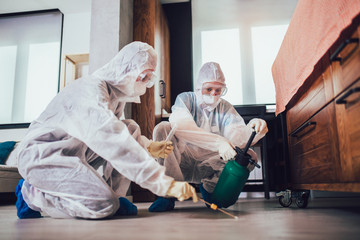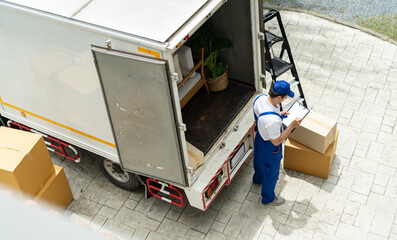 Pests can be annoying, but they also pose real health risks. The best way to deal with them is to prevent them from getting into your home in the first place. Contact Pest Control Flower Mound TX now!
Pests can be annoying, but they also pose real health risks. The best way to deal with them is to prevent them from getting into your home in the first place. Contact Pest Control Flower Mound TX now!
Many natural forces influence pest populations, including climate, natural enemies, the availability of food and water, and shelter. These factors should be considered when determining whether pest control is necessary.
Identifying pests is the first step to successfully controlling them. The ability to recognize pests enables the entomologist or pest control operator (PCO) to understand the problem and make more targeted treatment choices that reduce risks to people and collections, and minimize unnecessary side effects.
Identification involves recognizing the physical characteristics of pests and knowing what they do to crops or collections and when and where they occur. Sampling early in the season, and concentrating sampling in areas where pest problems have occurred in the past, can help detect a problem before it reaches damaging levels. Establishing a file of labelled digital images can also be helpful in identifying pests over time, and in developing preventative strategies to avoid future damage.
PCOs often work closely with a network of resources that include government agencies setting regulations, universities and research institutions facilitating progressive studies in entomology, and state departments of agriculture, land-grant colleges and natural history museums, which serve as local resource hubs for entomological information. This network of resources provides guidelines for safe pest management activities.
A basic goal of most pest situations is to suppress pests to a level below that which they cause unacceptable harm. Accurate pest identification can help in determining the proper strategy to accomplish this, and in determining which tools to use.
Many pests have different physical forms at different times in their life cycle or as they age, and a proper identification can be helpful in distinguishing them from similar species. For example, a weed seedling may look very different than a mature weed.
In order to select an appropriate biological insecticide, it is necessary to know whether the pest in question belongs to a particular insect order, such as Lepidoptera or Coleoptera. Similarly, a fungus that affects plants must be identified to the specific species, such as Fusarium or Phytophthora.
In the field, accurate pest identification can be accomplished through a variety of methods, including visual guides like those available in print or online from organizations such as NPIC and PestWorld. These guides enable users to correlate key physical characteristics of a suspected pest with a curated set of images or descriptions to match the pest in question to its corresponding category.
A commercial pest control service that employs exclusion tactics works to keep pests from entering a business or residential property in the first place. It’s much easier, less expensive and safer for the environment to prevent pests from entering a building than it is to eradicate a pest infestation once they have taken hold.
Pest exclusion techniques involve the sealing off of openings and potential entry points where pests can enter a home or building. Depending on the size of a space, this can involve the use of caulk, foam, metal screens, door sweeps and replacement weather seals, among other things.
Rodents and other critters are attracted to the smallest cracks, crevices and holes where they can hide, breed and gain easy access to food sources like garbage and waste. They can also wreak havoc on structures, leading to gnawed insulation, weakened foundations and other damage that leads to costly repairs and renovations.
That’s why it’s so important to spend time thoroughly examining the exterior of a property and taking note of any areas that are easily accessible to rodents and other pests. Thoroughly inspecting a home or commercial building should include checking for cracks in the foundation, gaps around vents and drain pipes, and areas where wires and cable enter the structure. Look for signs of rat or mouse activity as well, including droppings, chew marks and secretion trails.
When it comes to businesses, rodents love shopping malls and other large industrial spaces for the same reason they love homes – there are so many tiny nooks and crannies that serve as their entryways. It’s not unusual for a few critters to turn into an infestation within just a few days, which can put employees and customers at risk. That’s why it’s so important that businesses incorporate pest exclusion into their pest management plans.
Keeping a facility safe from pests begins with a thorough inspection and the proper installation of pest exclusion tools. A trained pest control professional can help with this process, using a variety of materials to protect specific areas from pests. For example, Pest offers three exclusion systems that shield specific zones of a building from pests and nuisance wildlife permanently, with no chemicals needed.
Chemical pest control uses toxic substances like chemicals and pesticides to kill the bugs and other pests that damage crops, gardens and homes. Chemical pesticides can be used as sprays, powders or granules and are effective against a wide variety of harmful insects including cockroaches, ants, bed bugs, mosquitoes, rodents and flies. When used according to label instructions, they pose minimal risk to people, pets and the environment.
Pesticides can also be used to prevent the spread of diseases carried by insects and rodents. For example, insecticides can be used to control mosquitoes that carry the virus that causes malaria and dengue fever. Chemicals are also important for agricultural use, where they can reduce the need for manual labor and increase crop production and quality.
However, pesticides can be damaging to the environment, especially if they are used frequently or in large amounts. With repeated exposure, many plants develop resistance to pesticides, which can be difficult to overcome. In addition, many pesticides have been linked to certain health issues including cancer and nervous system disorders.
For these reasons, many homeowners prefer non-chemical options for pest control. Fortunately, there are plenty of non-chemical methods that can be just as effective against challenging pests, such as plant-based products and natural predators. Non-chemical pest control can be especially effective when combined with other preventive measures, such as commercial and residential exclusion systems, which provide long-term protection without the need for chemicals.
In general, non-chemical pest control techniques have lower carbon footprints than their chemical counterparts and are less likely to harm beneficial insects or pollute the surrounding environment. They are also typically less expensive than conventional pesticides and can be a good option for homeowners who want to protect their family’s health, the environment and their property.
While non-chemical pest control is a great alternative to traditional treatment methods, it is important to find a reputable and knowledgeable company to ensure that your home or business is free of pests. Ask potential companies for references, EPA registration numbers, and details about their pesticide products to ensure that they meet your standards of safety and effectiveness.
Biological control, also known as biopesticides or biologically-based pest management, uses living organisms to suppress pest populations. This may involve predators, parasitoids, and/or pathogens. Unlike chemical pesticides, these organisms do not harm the environment or human beings. Biological control organisms vary by target pest and application method.
For example, solitary wasps and other parasitoid insects are used to control crop pests by directly attacking them. They may consume, paralyze, or kill the pests they prey on. Predatory birds may also be used to reduce pest numbers, particularly in orchards. Other organisms, such as viruses and bacteriophages, infect and disrupt insect pest life cycles by causing disease outbreaks and population crashes. These organisms, which are referred to as pathogens or biopesticides, can be sold commercially as microbial pesticides and applied in the same manner as other plant protection products.
The mission of the PPQ biological control program is to import, screen, develop, release, implement and monitor biocontrol organisms and technologies offshore against pests that could potentially be introduced into the continental United States and cause economic or environmental damage. This is accomplished through a combination of in-house activities and cooperative projects.
One of the most significant issues facing agriculture is the growth of pesticide resistance. In an effort to reduce reliance on these toxic chemicals, biological control is being widely used. In fact, it is an essential component of most integrated pest management (IPM) programs.
There are two general types of biological control: augmentation and introduction. Augmentation is the purchase and mass release of natural enemies to supplement existing populations and increase their effectiveness. This can be done in response to a pest outbreak or to delay the onset of a predicted pest infestation. This is often done to protect crops at critical stages of development, such as bud burst or flowering.
In contrast, classical biological control is the importation of natural enemies from the pest’s country of origin in order to reestablish predator-prey relationships in an area where these interactions have been lost. This approach has been very successful for a number of exotic insect pests, such as the Asian citrus psyllid in Florida and the gypsy moth in the USA.


